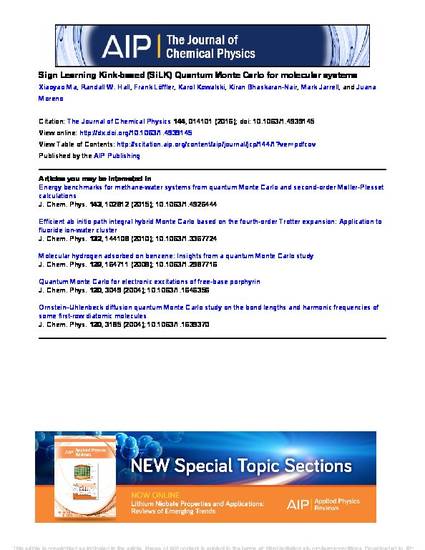
The Sign Learning Kink (SiLK) based Quantum Monte Carlo (QMC) method is used to calculate the ab initioground state energies for multiple geometries of the H2O, N2, and F2 molecules. The method is based on Feynman’s path integral formulation of quantum mechanics and has two stages. The first stage is called the learning stage and reduces the well-known QMC minus sign problem by optimizing the linear combinations of Slater determinants which are used in the second stage, a conventional QMC simulation. The method is tested using different vector spaces and compared to the results of other quantum chemical methods and to exact diagonalization. Our findings demonstrate that the SiLK method is accurate and reduces or eliminates the minus sign problem.
Copyright 2016, American Institute of Physics
Available at: http://works.bepress.com/randall_hall/72/
